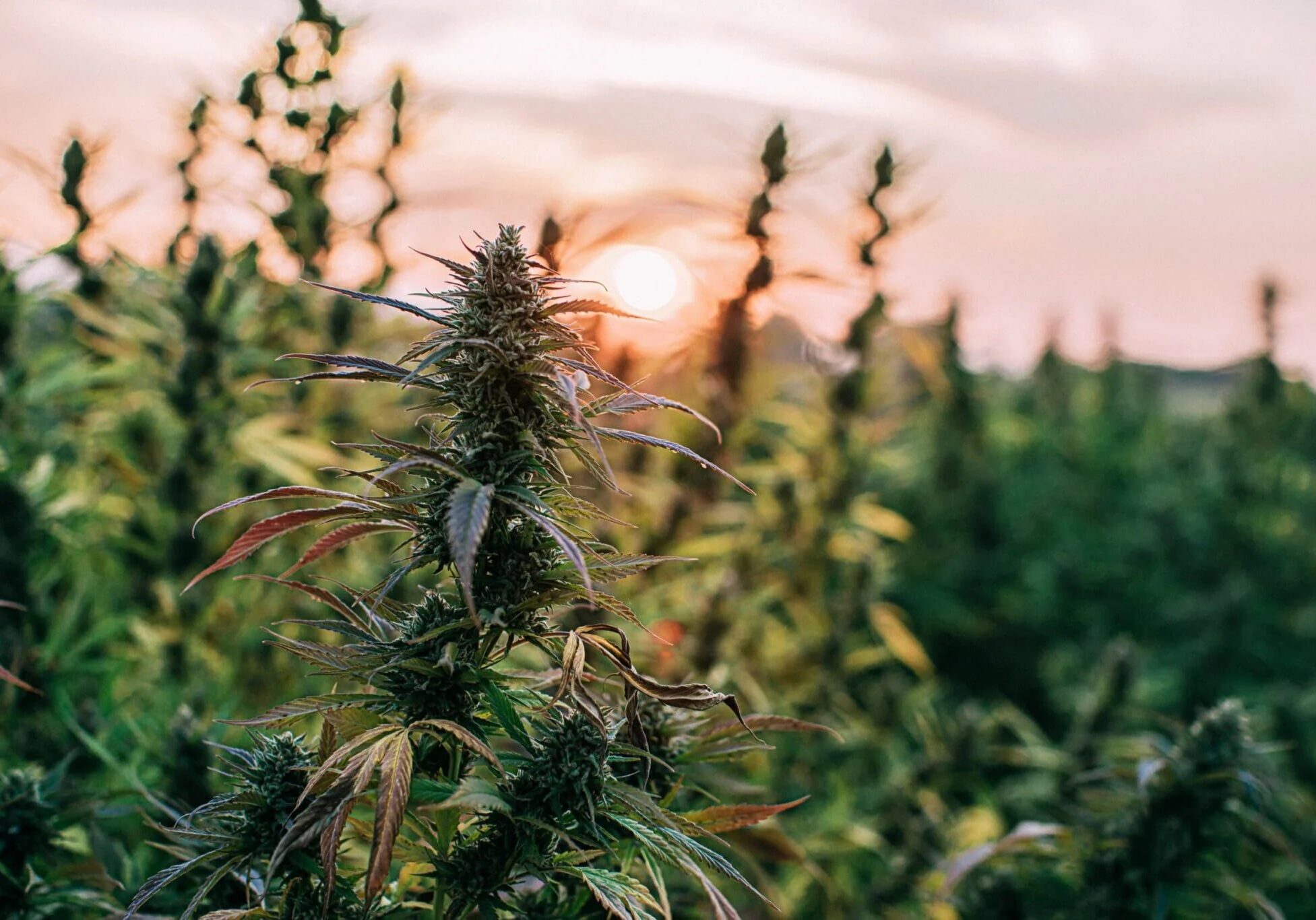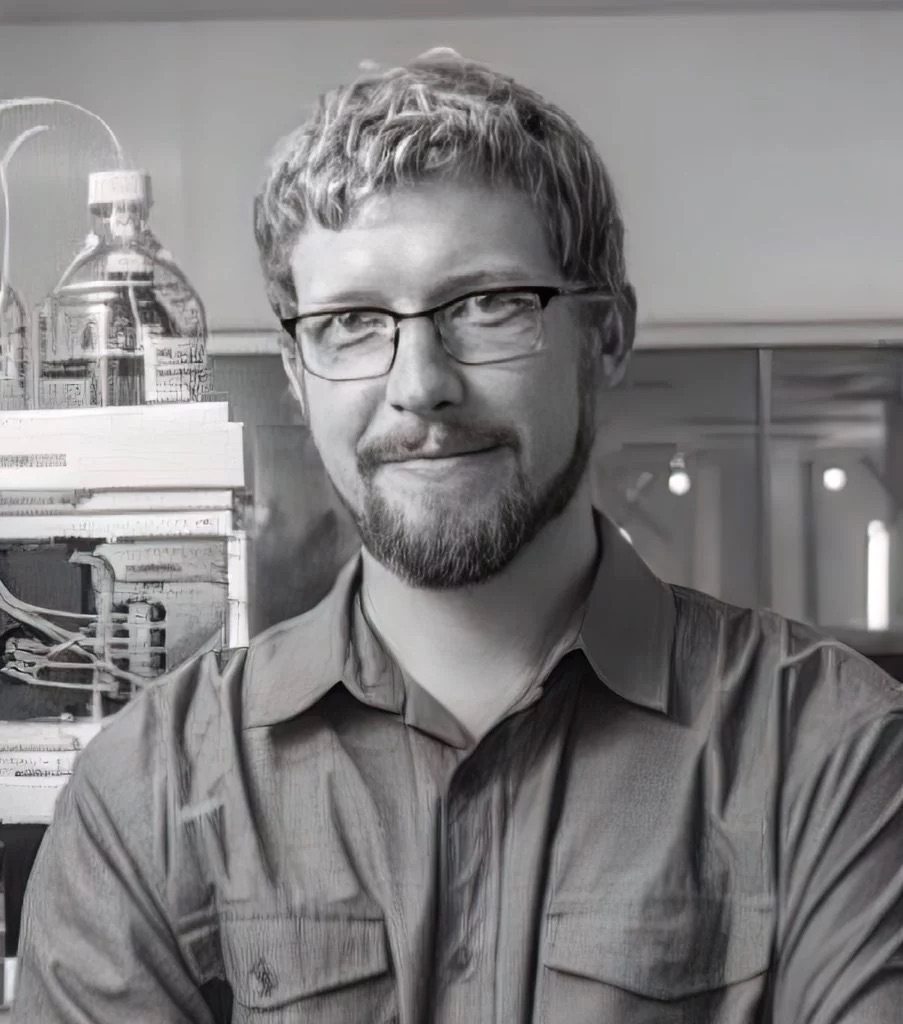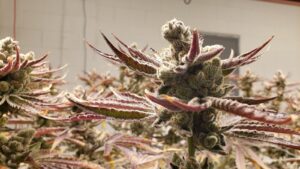Cannabis plants are hardy, but they are still prone to pests and other forms of contamination. Insects like spider mites and cannabis aphids, fungi-like powdery mildew and grey mould, and microbes of all kinds can attack growing or harvested crops. The plants can also absorb heavy metals/toxic metals from the soil, and can become contaminated by pesticides or mycotoxins during growth or afterwards.
Most growers know how to manage these risks, but not what to do if suddenly lab tests are showing unacceptably elevated levels of pesticides themselves. In fact, health and safety testing in the cannabis industry can be a sore point for some growers (especially those selling in the strictly regulated California market). But it’s important to remember that cannabis is inhaled as well as ingested. When we inhale substances, they pass directly from our lungs to our bloodstream and into the brain, without first going through the protective filtration of our livers as the products of ingestion do.
Testing of crops for health and safety, therefore, is a key responsibility of licensed growers in order to protect their customers. This, by the way, is a benefit that the illegal market doesn’t provide, and can be an important differentiator as the market matures.
For products labelled as organic or pesticide-free, or for any growers with artisanal brands, ensuring product safety is especially important. But even in the most well-run indoor growing facilities, unintentional pesticide contamination can happen.
If your lab tests show elevated levels of pesticides, there are a number of possible routes of unintended exposure. Here’s a guide to the most common causes of pesticide contamination, and what to do about them.
1. Pesticide Drift from Other Farms
If your crop is grown outdoors (either in a field or a greenhouse) near other agricultural operations like blueberry fields, orchards or wheat crops, it’s possible for “pesticide drift” or “spray drift” to occur. This can happen whether the pesticide spray was released from planes or ground-based equipment — even though most farmers do everything they can to minimise it.
Most farmers typically wait for a day with low wind speeds (15 km/h), medium-high humidity (50%–60%), and stable temperature conditions to spray. This is because pesticides are an expense in what are often low-margin businesses, and farmers need any applications to be as effective as possible.
Pesticide use in agriculture is highly controlled, and every individual pesticide has to be approved for a particular crop. For example, a pesticide approved for wheat might not be approved for broccoli. This is partly due to the need to target the pesticide to the particular insect, fungus, or bacterium. There may also be other considerations at work, like if the crop has a peel or other outer layer that’s removed, and how the crop will be used. Regardless, most farmers try to be good neighbours, knowing that they in turn can be vulnerable to the effects of careless spraying by others.
That being said, spray drift can occur both during and after the initial application. High temperatures can aid the evaporation of pesticide droplets, and windy conditions after the initial spraying can spread them as well. The smaller the droplets of the individual pesticide, the more likely it is that this will occur. Winds can also spread soil particles that are contaminated with pesticides.
If spray drift is a possible cause of excess pesticides, sending a soil sample to a lab can help verify this.
2. Water Contamination
Runoff from agriculture can lead to trace amounts of pesticides in the water in rural areas. Depending on the pesticide, levels can be higher in the summer, but some pesticides will linger in the soil for months before making their way via groundwater to pumping sources.
Having your water source tested will tell you if that’s where the pesticides are coming from.
3. Cleaners
Some cleaning agents contain the same chemicals as on the pesticide lists of health and safety regulators. For example, quaternary ammonia cleaners (AKA “quats”) are found in many types of cleaners and are also registered as a pesticide. There are other substances, too — almost anything that’s anti-microbial contains a pesticide.
If you suspect this is your source of elevated pesticide levels, check the safety data sheet (SDS) of the cleaners being used for the chemicals they contain. You can then check the substances online with Health Canada’s pesticide search (Canada) or the EPA’s office of pesticide programs ombudsman (USA).
You can avoid this risk entirely by sticking to bleach and isopropanol (AKA isopropyl alcohol) to clean your facility between crops or production runs.
4. Low Quality Fertilizers and Foliar Sprays
While it’s more common to find issues with unwanted substances with the lower cost sprays and fertilisers you would get from the local hydroponics store, it’s important to do your due diligence before changing your growing process in any way.
Before using anything new on your crop, it’s vital that your team conducts a material review. This is a deep dive into the direct and indirect materials that go into a product, followed by a series of tests.
In your material reviews, sometimes simply looking at the product labels will set off alarm bells. An example of this would be hydrogen peroxide-only foliar sprays. While they are lauded by home growers, these sprays can increase moisture and encourage the mould problems they are supposed to remediate. Their oxidising effect can cause burning of the plants and removal of terpenes. While this isn’t a pesticide issue per se, it underscores the need to be cautious of cost-savings tricks adapted from home growers.
If your new spray or fertiliser passes the initial review, then have it tested for unwanted substances, including pesticides.
Assuming that checks out, testing out new products on a small number of plants before using them on an entire crop can help you avoid nightmare scenarios in which you lose entire crops. Don’t forget to have a full set of health and safety tests done on the buds of these test plants to learn the full impact of the new input before you adopt it for full scale use.
5. Rogue Growers or Employees
It’s not common, but there have been incidents in which disgruntled employees or rival growers have deliberately sabotaged crops by spraying pesticides.
One such case involved someone who went onto the roof of a building and sprayed pesticides into the air intake of an indoor growing facility. In this case, the problem was solved when the particulate filters tested incredibly high for the pesticide and camera reviews caught the culprit.
The takeaway is that, while larger growers already know the importance of security for their operations because of the risk of theft, smaller growers should also consider controlling access and maintaining camera surveillance.
Finding the Source of the Contamination
If one of your samples comes back with unacceptable levels of pesticides, start by examining the lab report to determine the exact type(s) of pesticide that was detected in elevated levels. From there, you can check your lists of supplies for similar chemicals, and if needed, progress to testing of soil and water.
If the report is for testing of an edible product, consider that the contamination may come from another ingredient, like sugar or wheat.
If your crop is grown indoors, consider testing samples from your HVAC system or any other points of ingress.
Forewarned is Forearmed
Ensuring that legally grown cannabis has a great reputation for health and safety is essential for the good of end users and to the growth of the industry.
Unintentionally high levels of pesticides are just one risk that can mean the loss of entire crops and even the death of a business. Taking a proactive approach to controlling crop inputs can help give businesses the edge they need in an increasingly competitive marketplace.






